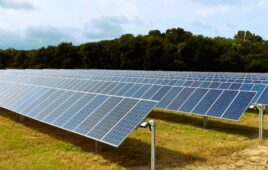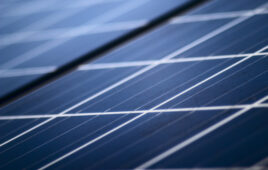Industry analyst firm n-tech Research has issued its latest report on the global BIPV market. The report titled, “BIPV Market Forecast and Analysis 2018-2027,” projects that the worldwide building integrated photovoltaics market will reach $2.9 billion in revenues in 2018 and grow to reach $5.7 billion in 2023 and $11.6 billion in 2027.
 The report analyzes demand for BIPV in 13 different nations/regions and examines how BIPV products — roofing, walling and glass — are evolving. The building types in the report include: government-owned offices; corporate HQs; educational institutions; hospitals/clinics; hotels/motels; airports; multi-tenant units; luxury homes; factories and warehouses.
The report analyzes demand for BIPV in 13 different nations/regions and examines how BIPV products — roofing, walling and glass — are evolving. The building types in the report include: government-owned offices; corporate HQs; educational institutions; hospitals/clinics; hotels/motels; airports; multi-tenant units; luxury homes; factories and warehouses.
Key findings include:
- While most of the BIPV opportunity will remain in the commercial sector, residential BIPV will grow at a much faster rate and will account for 15% of the worldwide BIPV market by 2023 and will generate $872 million in revenues. For now, much of the BIPV business will remain in the hands of local developers, builders and architects, but as BIPV revenues grow, unique BIPV products and brands will finally emerge. It will take large investments from large companies to make this happen, and the report notes that Saint-Gobain has already invested in BIPV through CertainTeed.
- By 2023, the top three geographical markets for BIPV will be (in order of the size of revenues generated) the United States, China and Japan. Together, these three countries will account for 75% of the BIPV market revenues in 2023. Both China and Japan are expected to generate well over $1 billion in revenues in 2023, with the United States supporting $2 billion. In the United States, certain states – notably California – have strong pro-solar mandates. In Japan anti-nuclear sentiments combined with a long-established tradition of using integrated solar helps to fuel BIPV demand.
- The materials technology issue that was hotly discussed in the BIPV market of a few years ago is slowing begin to reemerge. n-tech said it would not be surprised to see the silicon vs. thin-film issue re-enter the BIPV market debate in the next 12 months. RGS and Hanergy already make BIPV products using thin-film technology.
News item from n-tech




What is the normal thickness of tempered glass used in BIPV roofing panels approx 36 x72″? My project is in the Dallas Texas area and we regularly experience hail storms. I’m looking for a resilent product without over engineering it.